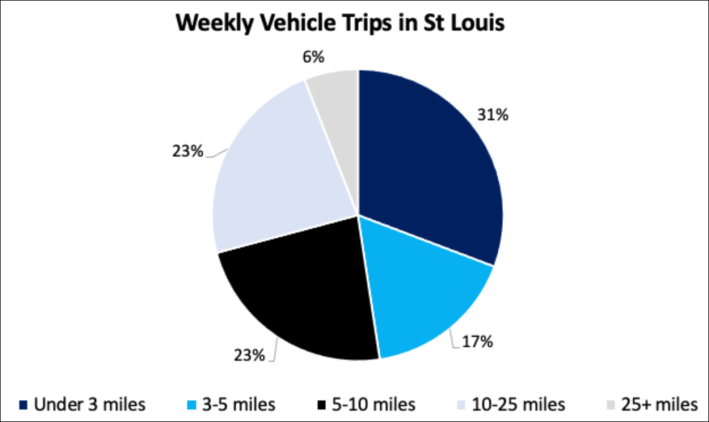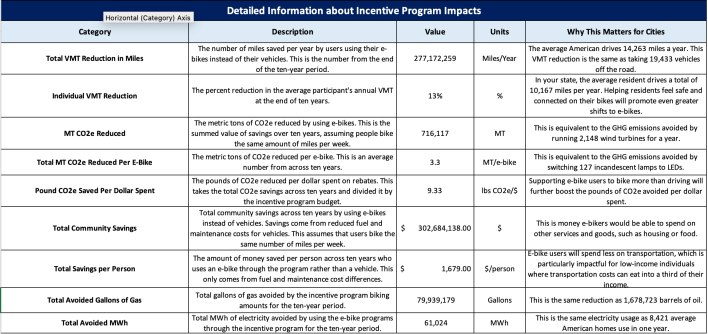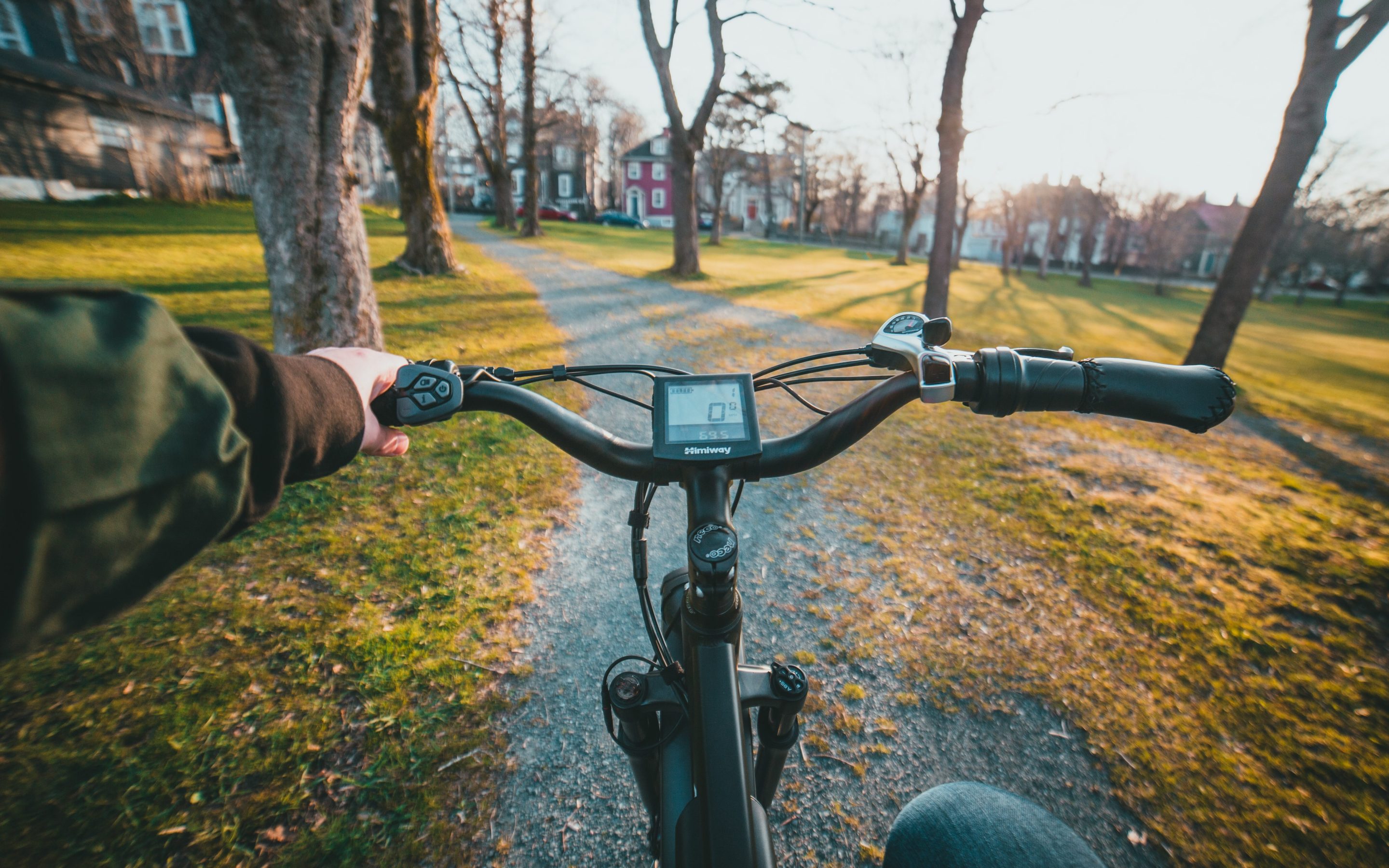Advocates and local transportation leaders can now find out exactly how much their community could gain by encouraging residents to swap car trips for e-bike rides — and how much bang for their buck they're likely to get if they adopt purchase incentives like Denver's blockbuster rebate program.
With the help of the new "E-Bike Impact Calculator" from the Colorado-based sustainability nonprofit RMI, anyone with an internet connection and a copy of Microsoft Excel can find out exactly how much money, pollution, and electricity their community might save if leaders leveraged good e-bike policy to achieve even modest mode shift goals.
RMI Senior Associate Bryn Grunwald said she created the tool because "people were sleeping on how awesome e-bikes are at the climate level,” and quickly found that the collective benefits were even more significant than she'd realized.
"[E-bikes are] often talked about more at the individualized scale," she said. "Personally I experienced myself saving money [from riding one]; personally, I experienced myself having a better connection to my city. ... But I wanted to give them good numbers, because there's a lot of people who can't imagine themselves biking, and really scoff at the idea that it could be good for the climate.”

To prove the doubters wrong, Grunwald drew on dozens of studies as well as insights from big-data mobility firm Replica to allows users to select their unique city from a simple drop-down list, and see at a glance how many short car trips are best primed to be replaced with e-bike rides — and what would happen in they were. In my home city of St. Louis, for instance, a stunning 48 percent of car journeys are under five miles, a distance that's a little bit less than the amount the average e-biker rides every day.
Of course, that doesn't mean folks will leave the car at home for every short trip — especially on unprotected U.S. roads, where even a brief ride can be a harrowing experience.
“[When it comes to cycling], most people are in the ‘interested but concerned' category," Grunwald added, referring to Roger Geller's famous four types of cyclists framework. "And to be frank, I don't blame them. I'm from Boulder, where [international cyclocross champion] Magnus White was hit by a car driver earlier this year and died — and you cannot make the argument that he was not aware of road safety."
That's part of why RMI's default assumes that cities will adopt a relatively modest goal of replacing just one in four car journeys under three miles with an e-bike ride, and one in 10 journeys under five miles, at least until their roads are safe enough to spend more time in the saddle. (The seriously ambitious, or residents of cities with great bike infrastructure, can easily input their own goals into the spreadsheet to adjust those numbers up.)
If St. Louis met that goal, the Gateway City would zap 93,956 metric tons of carbon dioxide from the atmosphere in just 10 years, while slashing pollution from tire pollution, nitrous dioxide, and carbon monoxide by 14 percent, compared to what would have been emitted had those short trips been taken by car. Riders, meanwhile, would pocket a collective $42.5 million over that period in saved fuel and maintenance costs, even accounting for the cost of replacing their e-bike batteries twice.
If far-larger Los Angeles accomplished the same goal, meanwhile, CO2 reduction over 10 years would top 1.02 million.

All those numbers, by the way, are automatically adjusted for current and projected rates of electric car adoption, which users can adjust up or down depending on how optimistic they are about their neighbors ditching gasoline. Grunwald stresses, though, that given the challenges of car charging and the astronomical price tag on most EV models, policymakers would be wise to embrace the e-bike as a faster way to wean off fossil fuels.
“I would love a world where everybody could buy an EV right now," she added. "But considering inflation and rising interest rates and student loans kicking in, I think that's an incredibly challenging ask for people. … [E-bikes are] a really affordable way to get people decarbonizing a lot of their trips right now. And I’m not even asking people to just give up their car and bike everywhere all the time; you don’t have to bike to the Costco 30 miles away! But I do think that if you change out even a portion of your trips, you can make a huge difference in your city overall.”
One of the fastest ways to get residents to make that shift, of course, is to give them free money to buy bikes of their own. That's what the capital of RMI's home state, Colorado, did in 2022, when Denver city leaders launched a $4.7-million e-bike rebate program that proved so popular it crashed city websites and created a new legion of riders.
Based on data from that inspiring program, the RMI calculator also allows users to model what would happen if they launched a rebate of their own. If Boston invested a comparable amount per resident, for instance, Beantown policymakers could reduce vehicle miles traveled by a staggering 21 million miles over 10 years, or the equivalent of taking 1,490 cars off the road completely; New York City, meanwhile, could reduce VMT by 277 million miles, and save participants in the program $302 million.

Perhaps the most revealing stat the chart spits out, though, is how much climate bang cities get for their buck when they start subsidizing e-bike purchases. In most I looked at, it's around 9 pounds of saved CO2 across 10 years for every single dollar they spend — not accounting for any parallel investments communities might make in e-bike infrastructure and zoning reforms that could boost riding even more.
“This is really one of those things where it's already so cheap for a decent reduction," Grunwald said. "But if you also make if you make an effort to invest in biking in other ways, you can continually see this compound.”






